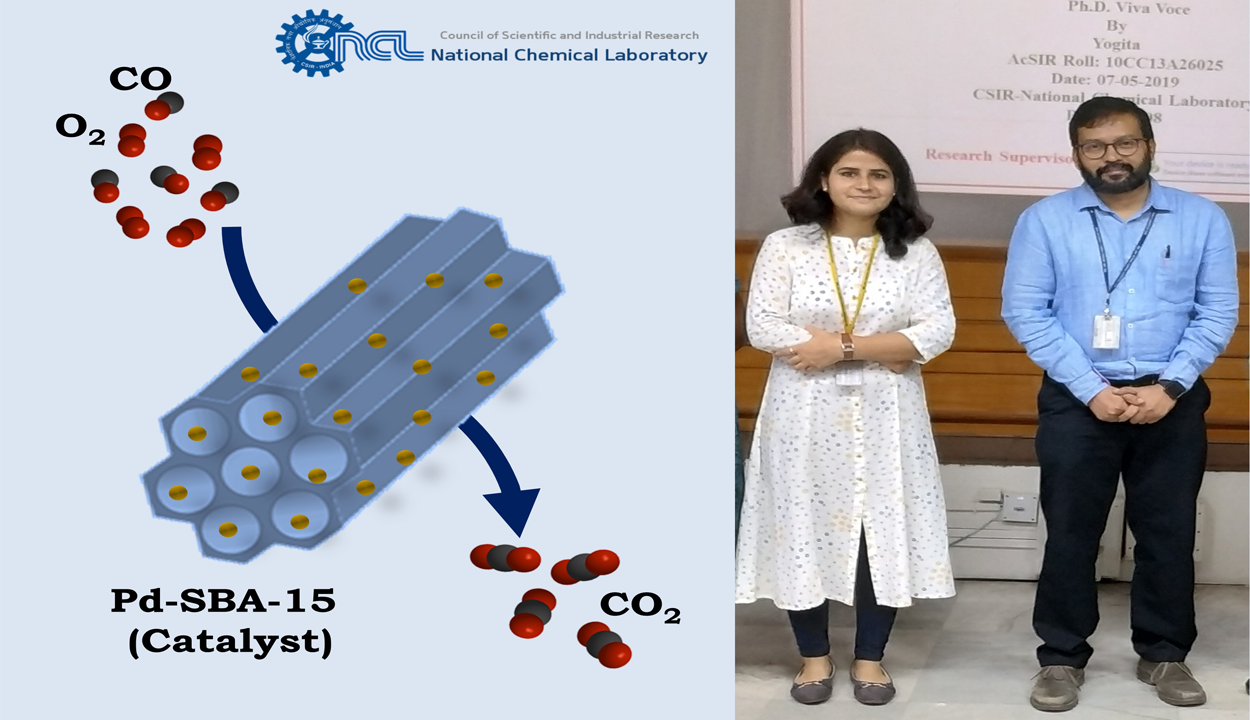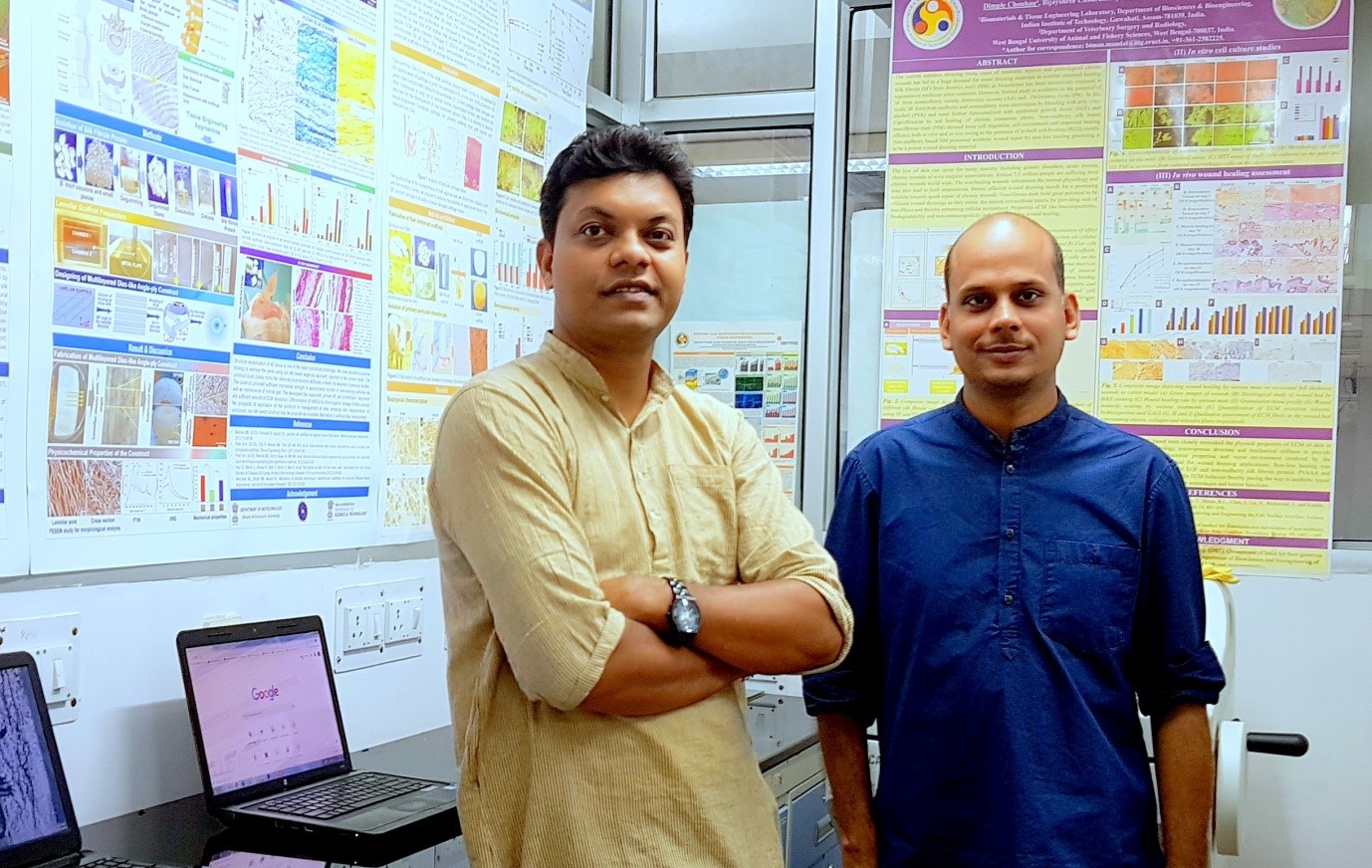
Researchers Develop New Method of Supporting Ultra Small Metal Nanoparticles on Silica
- News
- 1.4K
A research team at CSIR-National Chemical Laboratory, Pune – has developed a new method that could overcome the difficulties of supporting ultra-small metal nanoparticles on silica with desirable loading. According to the study published in a scientific journal ‘Applied Catalysis B: Environmental’, this new method was used to support almost 100 % metal precursor on silica with an overall Palladium loading of 3 weight percentage with a particle size of 1-2 nm.
Silica is a widely used material in heterogeneous catalysis for supporting metal nanoparticles. Besides its abundant availability and low cost, Silica is thermally stable and has tuneable textural properties. However, being inactive support with tedious synthesis methods required to support metal nanoparticles is the major drawback of silica. Thus, the development of a method to support very small metal nanoparticles on any type of silica is the major challenge.
In the current study, a research team led by Dr. C. P. Vinod has overcome this difficulty of supporting very small palladium (Pd) metal nanoparticles on mesoporous silica support (SBA-15) by using an easy and inexpensive route i.e. modified deposition precipitation method. The Pd-SBA-15 catalyst synthesized in this way has shown superior catalytic activity for carbon monoxide (CO) oxidation than the other reported Pd/silica systems.
The versatility of this method could be extended for different metals and non-metals. The conventional deposition precipitation method results in significant loss of metal precursor in solution during the catalyst synthesis with poor metal loading and difficulty in stabilizing small metal particles. “We have developed a scalable method of catalyst synthesis where the loss of expensive metal precursor is negligible, size of a metal nanoparticle can be controlled which makes it interesting from the industrial perspective,” said Yogita Soni, lead author in this study.
“Using a variety of spectroscopy, microscopy techniques, and Density Functional Theory (DFT) calculations, we have shown in this study that when the size of Pd NPs is very small (1-2 nm), high valent Palladium oxide is generated which on decomposition produces coordinatively unsaturated Pd (Pdcus) sites in the reaction conditions. These are the actual catalytic sites that are responsible for catalyzing carbon monoxide (CO) oxidation at a temperature as low as 50°C. The activity demonstrated by this catalyst makes it a potential candidate for various other oxidation and hydrogenation reactions, thus broadening the scope of this material in catalysis,” said Dr. C. P. Vinod, Principal Scientist, NCL Pune and corresponding author in this study.
Authors believe that this can be a cost-effective route for synthesizing noble or non-noble metal-based silica catalyst. This catalyst can also be relevant in catalytic converters used in vehicle engines to convert harmful and toxic gases to less toxic molecules where one of the reactions is the oxidation of carbon monoxide. The working temperature of the Pd-SBA-15 catalyst is also low which can be utilized in cold start engines.
Researchers say this method can be extended to synthesize bimetallic Pd and other noble metal-based nanoparticles supported on silica which has applications in the many reactions like preferential oxidation of CO in H2, H2O2 generation, CO2 hydrogenation, hydrogenation of organic molecules to produce platform chemicals, partial methane oxidation, etc. Since the size of nanoparticles is very small the reactions can be catalyzed at milder conditions with higher reaction rates known so far.
The research team included Yogita Soni, Sumanta Pradhan, Mahesh K. Bamnia, A.K. Yadav, S.N. Jha, D. Bhattacharyya, Tuhin Suvra Khan, M.A. Haider, C. P. Vinod from CSIR- NCL, RRCAT Indore, BARC Mumbai and IIT Delhi. The study was funded by CSIR, Government of India.
If you liked this article, then please subscribe to our YouTube Channel for the latest Science & Tech news. You can also find us on Twitter & Facebook


